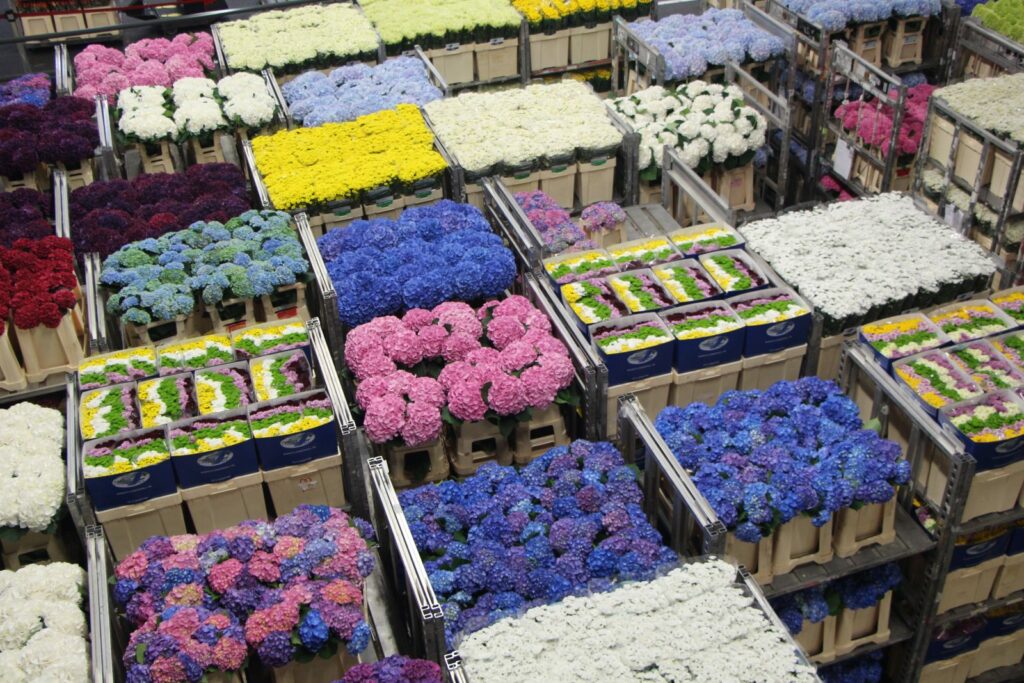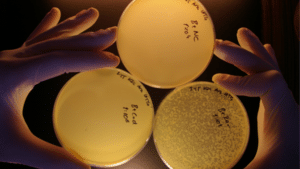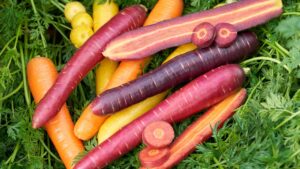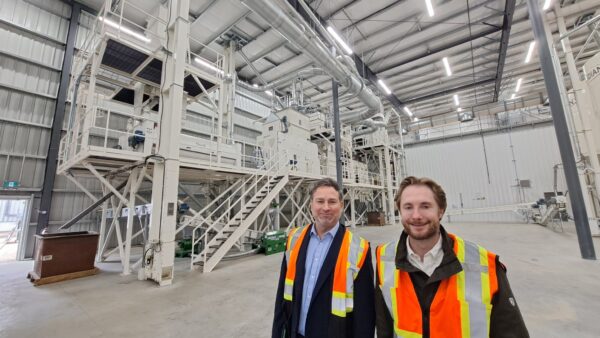On the trip of a lifetime with the International Federation of Agricultural Journalists, Julie Deering tasted, witnessed and explored the shaping of a new food culture — one that could make its way to the U.S. in the next five to 10 years.
Here in the United States, we love our food! And we’ve tons of it, in many forms from succulent BBQ to cool, crispy lettuce and from Mexican to Japanese and Cajun to Mediterranean cuisines. Flavors abound … but one might argue many are left wanting more.
More of what? The answer eludes most who work in what I’ll call corporate U.S. food circles. Is it more flavor? Is it a feeling of satisfaction? Is it natural? Is it healthy? Is it good for the environment? Good for me to eat? Yes … to all of the above and that’s exactly what those who have a love for food and agriculture are looking to provide in the Netherlands.
Representing the U.S. guild, I sat down with the president of Wageningen University and Research, visited a “Smaak Park” which translates to taste park, toured a Rijk Zwaan tomato trial center, met two innovative sons making cress a chef’s must-have ingredient, smelled dozens of roses at Dümmen Orange, had a gastronimical experience at a pop up restaurant with chef Soenil Bahadoer (holder of two Michelin stars), walked through the World Horti Center and witnessed the world’s largest daily plant and flower auction at Flora Holland and so much more.
It is my hope that this compilation of short stories gives you some insight as to the Food Love culture that’s being curated in the Netherlands.
—Julie Deering
Our Twisted Path to the Future and Farming’s Big Movement
Wageningen University’s President Louise Fresco eloquently addresses the challenges set before agriculture and paints the vision for the next 100.
Scientific progress has been a huge success story outlines, professor Louis Fresco who has served as president of Wageningen University & Research since July 2014, but it has also come with a number of costs. Pollution. Loss of diversity. Land degradation. Climate Change. Urbanization and an increasing divide between city and rural areas.
“We are on the brink of enormous change,” she says, noting that farming used to be just the cultivation of food, pharmaceuticals and fiber. Today, and even more so in the future, farming is and will be much more than that, she explains.
“I believe that agriculture — it’s using biomass for the future of mankind — will be far more influential moving forward,” Fresco says, speaking of an agriculture-food value chain that produces no waste, and where waste is produced that it be recycled within the chain.
Driven by need as the population is expected to grow from its current 7.5 billion people to 9.5 billion by mid century and farmers are expected to become even fewer, land in production will need to be even more efficient than it already is. Fresco speaks of an agriculture that is not negative or harmful to the environment; rather, it’s positive and contributes to an overall healthy ecosystem.
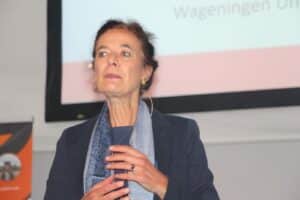
It’s one where waste water through the use of enzymes and minerals is recycled and used to irrigate crops or to water livestock. It’s one where soils, trees and grasses capture carbon. It’s one where fruits and vegetables are grown in or near cities through vertical or indoor farming. It’s one that harnesses renewable energy.
“We have to look quite differently at the energy industry,” Fresco says, taking the mind to a “post petroleum” world.
Only agriculture can play this role, she says, emphasizing that she doesn’t mean taking land that’s suitable for producing food and producing biofuels out of production, but looking at how it can contribute to a post fossil fuel world. It will be location specific. Each country will be different, and each landscape offers unique and different opportunities.
“Agriculture has a bright future, an important future,” Fresco says. “There will be no peace, no civilization, no stable society and no equity if we do not produce agricultural products for everybody.
“For food, this means it should be safe; it should be sustainably produced; it should be affordable.”
But Fresco says, there’s not just one pathway to this future.
“I will not tell you that the whole world will move toward drones and mechanization. That will not happen,” she says. “But we will move toward technology dependent agriculture, and the technology has to be adapted to the situation and that adaptation will take different forms.
Diversification of technology, she says, is key to the future. It’s trying to find technologies, whether it’s mechanical or genetic, that fit the situation. This, Fresco says, is all the more important because public acceptance of technology in some countries is declining rather than increasing.
“The challenge is to get an ecologically-based technology that feeds into that circularity,” she says. We need to make sure we don’t waste. We need to make sure we don’t replace labor when there is no alternative form of employment.
“The only way we can restore farming is by making sure [farmers] have access to technology that fits their own situation and to make sure that they are proud of their profession. There’s nothing more important for a farmer than knowing that they’re part of a system that feeds other people … perhaps on the other side of the world.”
Curating a Food Culture
From the fields to flavor, the city of Ede is in the midst of developing an entire municipality focused.
Neatly nestled in the countryside and a mere six miles from Wageningen University & Research is the city of Ede, the first municipality in the Netherlands with a comprehensive vision on food. That vision is healthy and sustainable food for everyone.
It starts with our food and agriculture policy, says Leon Meier, the city’s councillor for Food. Meier explains that Ede currently has an estimated 800 farmers, but in the next 10 years that number is expected to be closer to 200.
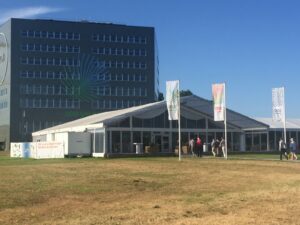
“Society has been driven away from the production of food, so we have to re-establish that link,” Meier says.
One way they are doing that is through school gardens which act as teaching labs, and the produce is then used to prepare student meals. Another way, Meier highlights, is through the use of the city’s public spaces by planting nut and fruit trees.
There’s also Gelderse Vallei, the leading food hospital of the Netherlands. It ensures that “every patient receives the right nutrition in the right measure at the right time.” Sound familiar?
The policy, which was put in place four years ago, centers on integrated food governance taking into account production, sustainability and a healthy economy.
Ede is part of the “FoodValley,” which consists of eight cities and municipalities working together on economic development around food and agriculture.
“We found out several years ago that 82 percent of the research in our country is being done in this FoodValley region, the strip between Ede and Wageningen University.
Here 82 percent of everything is connected in some way to food and agricultural research, Meier explains.
As an outsider looking in, it’s built on a number of seemingly unconventional partnerships. As an example, the Human Nutrition Department of Wageningen University & Research collaborates with the hospital on nutrition, disease and health.
According to the hospital, one in five of its patients is malnourished. This doesn’t necessarily mean that someone is underweight. People with a good weight and people who are overweight can be malnourished as well if they do not get enough healthy nutrients, such as proteins and vitamins.
“We know that malnourished patients often spend longer in the hospital, the efficacy of treatments are more unlikely to be successful and complications are more frequent,” says Meier.
Research is also done on the importance of good nutrition and exercise for the physical condition of people. Scientists study how optimal nutrition promotes performance and recovery in athletes.
Nutrition and food aid not only in a healthy lifestyle and speedy recovery from an injury or any procedure that needs to be done, but food is also an experience — one to be enjoyed with family and friends and good conversation and music.
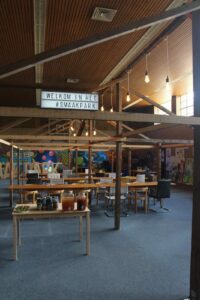
This is where “SmaakPark,” translated to taste park, and Food Inspiration come into the picture. SmaakPark is like a theme park for food lovers, explains an enthusiastic Christian Weij who got his start as a food designer with Puur-e but was sent searching for answers to the commonly asked question: “How is this produced?”
Weij is in the process of transforming an old sports hall built more than 100 years ago for officers to hone their sword fighting skills into a fulltime culinary experience. When complete, SmaakPark will include a fermentation lab, a food studio, restaurant and bed and breakfast.
During the past three years, the city of Ede, architects, landscape architects and an estate agent have put together an extensive plan for this location; some changes are still being made to create more of the theme park ideas.
Food Inspiration is a digital magazine dedicated to the food and hospitality industry. Their team also organizes events like Food Unplugged and Food Inspiration Days.
“We put the spotlight on the farmers, producers, entrepreneurs and chefs that bring something unique to the table,” says Hans Steenbergen, Food Inspiration editor.
The partnerships don’t stop there, they criss-cross and connect from one organization to another, from university to farm and from farm to SmaakPark and from SmaakPark to chefs and from chefs to nutritionists and nutritionists to healthcare. The city of Ede has put the wheels in motion for a mini-sized circular food and agricultural economy with international impact.
Viva la Veggies!
At the start of the food chain, Rijk Zwaan is breeding for flavor, convenience and consumer desire.
Active in more than 100 countries and one of the Top 5 vegetable breeding companies in the world, Rijk Zwaan contributes to the health and well-being of people all over the world. One of the company’s goals is to increase the health of people through increased vegetable consumption, says Steven van Paassen. However, he says the company isn’t investing resources into biofortified vegetables.
“Why spend the time and money trying to increase the vitamins available in lettuce when you can just mix in sweet pepper and get plenty of Vitamin C,” says van Paassen, the company communications specialist.
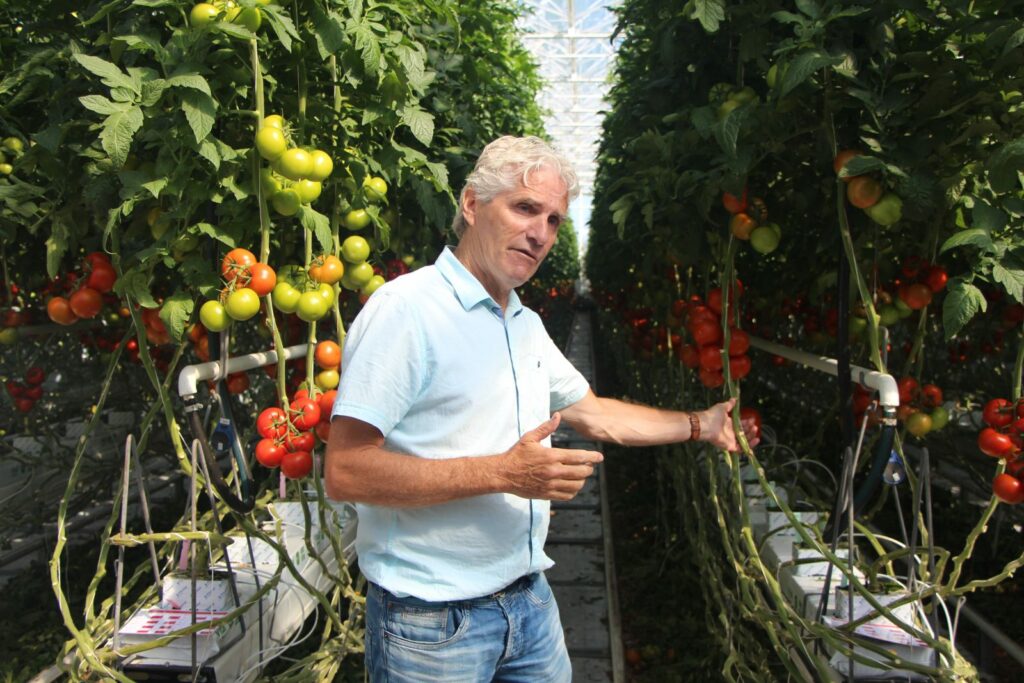
He says 80-90 percent of vegetables are purchased in supermarkets. As such, the company conducts a great deal of consumer research to understand what is attractive, what they like and dislike. Furthermore, they focus on partnering
with farmers to ensure they are providing the best seed and accompanying knowledge and resources to help them succeed.
This partnership with growers, van Paassen says, is also beneficial to our breeders because we get that direct feedback from the farmer and breeders can immediately evaluate or act upon what’s happening in farm fields.
“Vegetables are not mass produced like maize and wheat. I always say they are a very social food in that they add color and variety to your meal,” van Paassen says. “Local varieties are very important for local societies. We are always looking for new growing techniques, new varieties and genetics, more resistances and knowledge sharing opportunities.”
Marketing Genius
Who knew that cress is a treasure-trove of flavor for chefs?
I¬†walked in this facility with not much excitement to learn about the business of microgreens, but it was far and away one of the best stops on my trip. Microgreens — those small little garnishes that sit on the side of your plate — are making a big splash. These little greens can pack a punch for your taste buds.
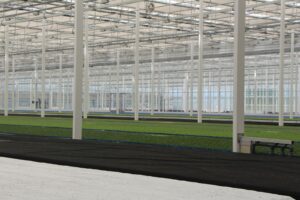
Rob Baan, who purchased the company back in 2002 and renamed it Koppert Cress, wants to change the way people look at fresh food and health. His approach hasn’t been just to seek out different microgreens and grow them, but to partner with chefs and high-end restaurants around the world and train them on how they might incorporate these microgreens into their dishes. To entice chefs to come to his facility and learn, he’s got one of three custom-made Molteni ranges, something that has most chef’s jumping at the chance to experience.
Baan and his business partners, Theo Cuppen and Altai Lin, all have a background in the seed industry. Baan used to work in marketing for Syngenta. Cuppen and Lin were operating seed companies under the names of Inova Seed and Oriental Seed. Both had been looking for initiatives outside the seed industry but with a connection to their core activities.
Within the business Cuppen manages the seed companies and is responsible for the smooth running of logistical matters relating to seed and the international communications and financial hurdles. Lin manages production locations in China and Vietnam, and is always on the lookout for new combinations, and Baan is the communicator and marketer of the trio.
Color the World
From research to the auction block, the world of flowers isn’t for the faint of heart.
Maybe best known for its colorful tulip fields, the Netherlands is also home to the world’s largest flower and plant auction, Royal Flora Holland. Located in Aalsmeer, near the port city of Rotterdam and the Schiphol airport, Royal Flora Holland has flower sales of $2 billion annually with total annual sales of 4.7 billion euros.
The first four to five months of the year really impact our year-end earnings, explains Erik Boland, one of the auctioneers. Things that happen in Kenya can affect our prices here … We always say no disaster is the biggest disaster because then we have low prices.”
To see the facility at its peak, one must arrive in the early morning hours. It’s a logistics marvel: plants come, are assigned a lot, go up for auction and are moved out — all within a matter of 24 hours. With 35 auction clocks and two auctioneers per clock, things move fast. For perspective, in 2016 the cooperative moved 12.5 billion items, or 34 million items daily for the entire year.
Royal Flora Holland is a cooperative of more than 4,000 growers, of which 615 are based abroad, that started more than 100 years ago to bring the region’s flower growers together, serving as a trading place. The farthest grower is located in Ecuador.
Closer to home are bulb growers WAM Pennings and ornamental breeders Dümmen Orange.
Founded in 1951, WAM Pennings is a second-generation family business, with the third generation back in the mix, that farms 200 hectares of tulips, cannas and oxalis and exports to more than 60 countries. The family has invested in smart technology such as soil moisture meters to improve production and adopted biological and mechanical pest control as a means of reducing pesticide use.
“Our challenge is to produce bulbs in the most sustainable way we can,” says Simon Pennings, owner and operator, adding that they are members of Planet Proof. “We are evaluated on our use of crop protectants and fertilizers and work to minimize water use and waste.
“Here, we are basically farming the sea bottoms,” adds Pennings, who says they harvest five to six hectares a day.
At the beginning of the process and on a much different scale is Dümmen Orange, which witnessed a breakthrough in 2018. In collaboration with IribovSBW, it had been working to speed up bulb propagation and through a tissue culture method has managed to increase the multiplication rate of a single tulip bulb from three to several thousand per year.
“A breeding process that takes more than 20 years is not an effective way of responding to changes in consumer and market needs,” says Hans van den Hueval, managing director of research and development for the company. “This revolutionary breakthrough drastically changes the dynamics of the tulip breeding process that eventually should not take longer than six to seven years.”
With more than 7,700 employees, Dümmen Orange brings flower breeders from around the world together. I had a chance to tour one of the glasshouses to get an up-close look at the variety of roses. With annual sales of 350 million euros, the smell of business is a sweet one.
Since my visit, Dümmen Orange has broke ground on a new state-of-the-art Breeding Technology Centre in the Netherlands. The new facility will be one of the world’s largest laboratories for ornamental research, comprising three floors and facilitating research in phytopathology, genetics, genomics, tissue culture, cell biology, plant physiology and diagnostics.
Nicolette Straver, the corporate communication specialist, says that the research program focuses on traits that bring added value to the value chain, such as resistances, improved shelf life and improved yield. It will make use of technologies that increase the efficiency of the breeding programs through molecular breeding, efficient trait evaluation and genetic diversity analyses.
The new center is expected to open in 2020.



